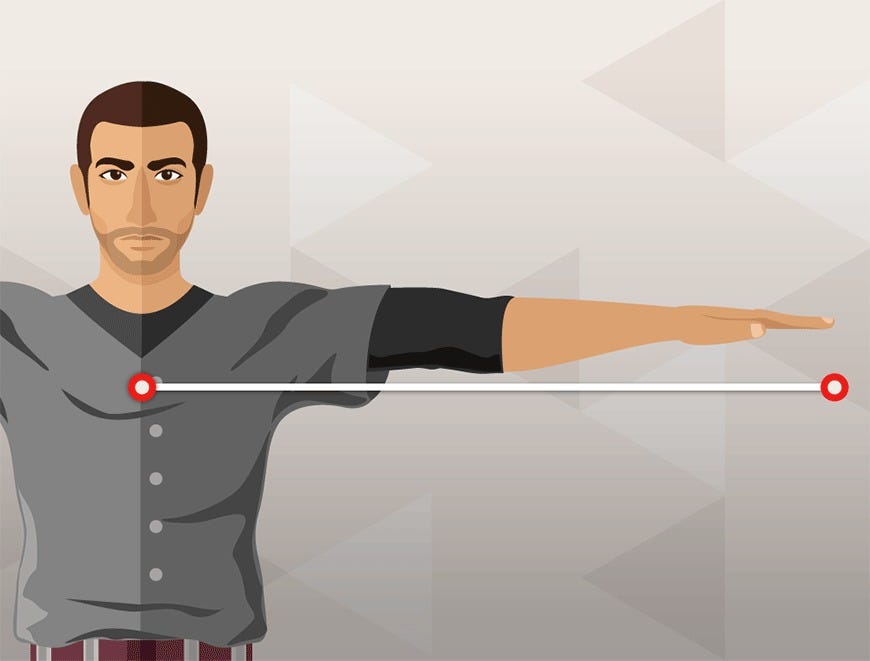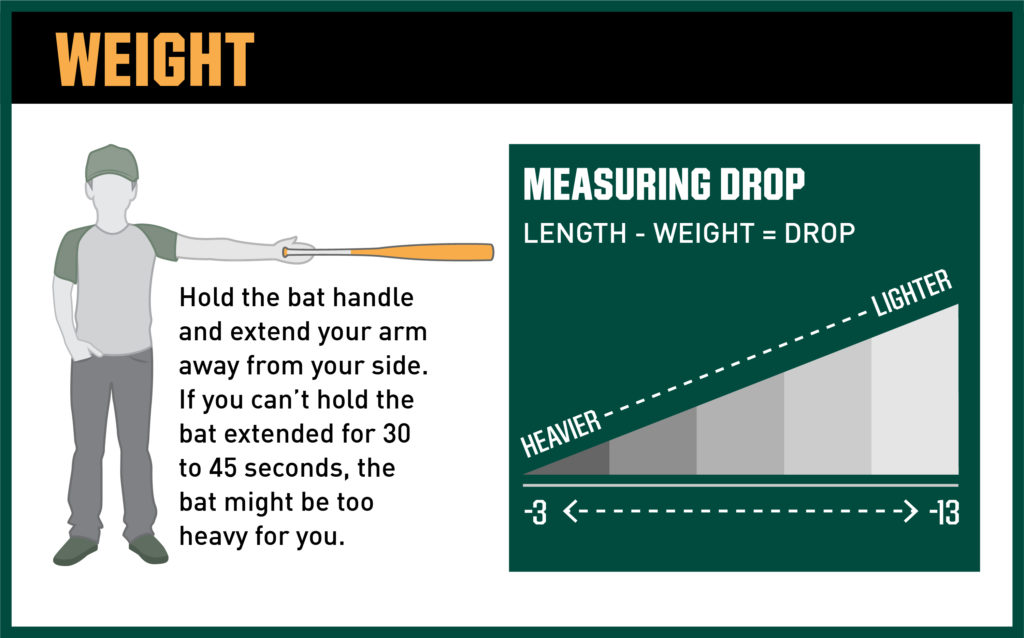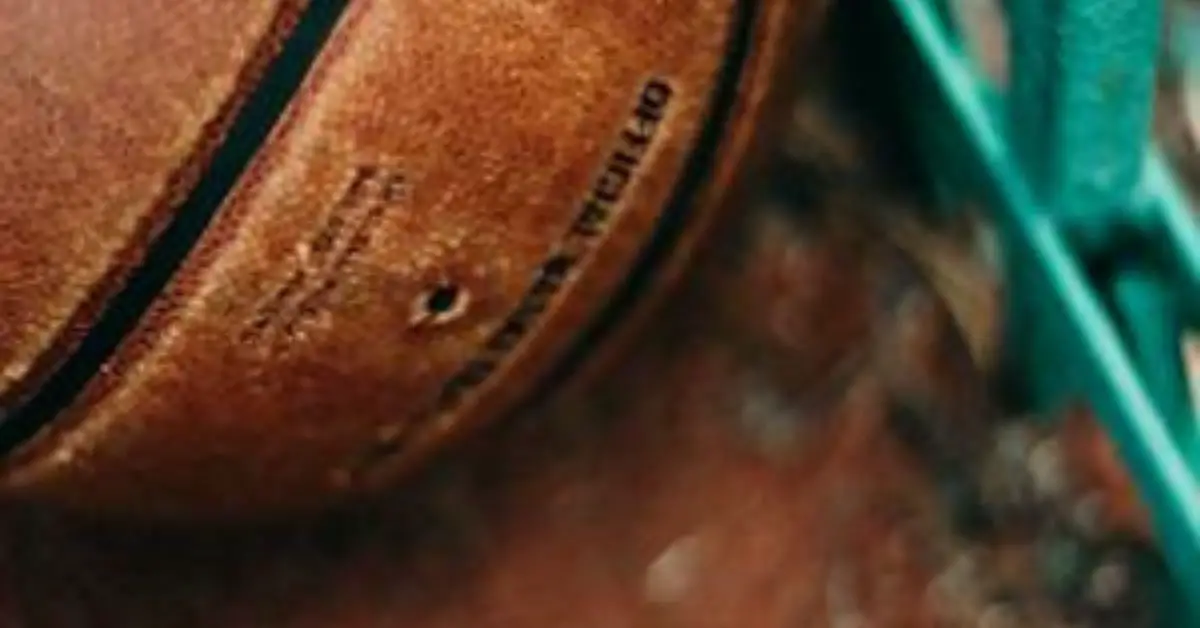Choosing the Perfect Size Baseball Bat for Your Child: Perfect Match!
To choose the right size baseball bat for a child, consider the child’s height and weight. Select a bat that aligns with their age-based league requirements.
Choosing the appropriate baseball bat for a young player is essential for their comfort, performance, and the development of proper batting skills. The right bat size helps in enhancing swing mechanics and hitting efficiency, thereby fostering a child’s love for the game.
Parents and coaches must evaluate various factors including a child’s size, strength, and the level of play. It’s important to strike the right balance; a bat that’s too long or heavy can hinder a child’s swing, while one that’s too light might not allow for power in their hits. Ensuring the bat meets league regulations also prevents any game-day disappointments. The process involves a combination of using size charts, observing the youngster’s swing, and sometimes a bit of trial and error to find the most suitable option. Our guide aims to simplify this selection to get your child game-ready and confident at the plate.

Credit: www.baseballmonkey.com
Swinging Into Action: The Importance Of Bat Size
Choosing the right size baseball bat for a child is crucial. The perfect bat size helps with accuracy, speed, and control. Kids enjoy the game more with the right bat. Less strain and better technique come with a properly sized bat. This guide lays out what to consider when picking a bat size for young players.
The Role Of Bat Size In A Child’s Game
Matching bat size to a child’s height and strength is significant. The right bat size affects a child’s ability to:
- Hit the ball effectively
- Achieve better bat speed
- Maintain control during swings
A bat too big can slow a child’s swing. A bat too small won’t help them reach the ball. The goal is balance.
Safety And Comfort: Why Size Matters
Using the correct bat size ensures safety for young players. Here’s why:
| Aspect | Impact |
|---|---|
| Weight | A lighter bat means less strain on arms. |
| Length | A suitable length provides ease of movement. |
| Comfort | Comfort with the bat leads to better practice sessions. |
Comfort with a bat size translates to better on-field performance. Safe practice sessions foster growth and confidence.

Credit: www.dickssportinggoods.com
Age Versus Bat Length: Starting Point
Finding the perfect baseball bat for a child starts with understanding the relationship between age and bat length. Age provides a baseline for selecting the right bat size. Read on to better grasp this essential aspect for your young slugger’s success on the diamond.
The General Age-to-length Ratio
Choosing the right baseball bat size is critical for proper technique and comfort.
| Age (Years) | Bat Length (inches) |
|---|---|
| 5-7 | 24″-26″ |
| 8-9 | 26″-28″ |
| 10-11 | 28″-30″ |
| 12-13 | 30″-32″ |
Use this table as a starting guideline. Remember, each child is unique!
Adjustments For Skill And Experience
Bat length should reflect a child’s skill level and experience. Note these nuances:
- Beginners: Start with lighter bats to focus on form.
- Experienced: Skilled players may handle longer bats.
- Taller kids: Consider a longer bat for extended reach.
- Stronger kids: They may prefer a heavier bat for power.
Adjustments are crucial. Test different bats to find the ideal match.
Weight Matters: Finding The Balance
Selecting the perfect bat for a young player is crucial. Too heavy and the bat slows swings. Too light and power fades. Let’s focus on hitting that sweet spot.
The Significance Of Bat Weight
The weight of a baseball bat affects swing speed, control, and power. Light bats suit quick swingers. Heavier bats add power but diminish speed.
- Heavier Bat: More power, less speed.
- Lighter Bat: Faster swings, less force.
Children grow fast. A bat that fits today may not work next season. Consider a child’s strength and hitting style when choosing.
How To Test For The Right Weight
Testing the bat’s weight ensures comfort. Here’s a simple method to find that balance:
- Let the child hold the bat with one hand.
- Extend the arm, holding the bat outward for 30 seconds.
- If they struggle, the bat may be too heavy.
Visit a local store to compare different weights. Some stores may also offer swing analysis systems.
Remember, the correct weight leads to better performance and more fun!
League Requirements: Staying Within Rules
When picking a baseball bat for a child, league requirements are key. Different leagues have unique rules. These rules ensure safety and fairness. It is vital to know these before buying a bat. This section will guide you through understanding league standards and checking for compliance.
Understanding League Bat Standards
Each league has a set of bat standards. These standards often include:
- Length: How long the bat can be.
- Weight: How heavy the bat is.
- Material: What the bat is made from.
- Barrel diameter: How wide the bat’s hitting area is.
It’s crucial to know your league’s rules. They can differ between Little League, Babe Ruth, Dixie Youth, or Pony. Check the official league website or ask for a rule book. Some leagues have approved bat lists. Make sure the bat you choose is on this list.
Bats not meeting these standards can’t be used. Using the wrong bat can lead to injuries. It can also mean being removed from games.
Checking With Coaches For Compliance
Coaches know league rules well. Always ask your child’s coach before buying a bat. They can provide valuable advice. Coaches ensure players have bats that meet league expectations.
Coaches can recommend:
- The right size and weight for your child.
- Bats that are performance-appropriate for your child’s skill level.
- Approved brands and models.
Double-checking with a coach can prevent buying the wrong bat. This saves money and avoids the disappointment of a child being unable to use their new bat.
Material Considerations: Aluminum Or Composite?
Choosing the right baseball bat material is crucial for enhancing a child’s performance on the field. Balance, speed, and power come into play when deciding between aluminum and composite bats. Understanding the unique characteristics of each material can lead to a more informed and suitable choice for your young player.
Pros And Cons Of Different Materials
Each material offers distinct advantages and disadvantages. It’s important to weigh these before making a purchase.
| Material | Pros | Cons |
|---|---|---|
| Aluminum |
|
|
| Composite |
|
|
How Material Affects Size And Performance
The material of a bat directly influences its size and how it performs in a game.
- Aluminum bats tend to be lighter, allowing for quicker swings and easier handling—ideal for beginners.
- Composite bats, while often heavier, are designed for power hitters looking to maximize their swing momentum.
Size isn’t just about length and weight; it’s also about the bat’s feel through the zone. Children need a bat they can swing comfortably and confidently. The right material can make all the difference.
The Child’s Height And Strength
Choosing the right size baseball bat for a young player is crucial. It can affect both their swing and confidence. A bat that matches a child’s height and strength helps in learning proper batting technique. Let’s explore how you can find the right fit.
Matching Bat Length To Child’s Stature
Finding the ideal bat length is the first step in selecting the perfect bat. You can use the following general guidelines:
| Child’s Height | Suggested Bat Length |
|---|---|
| 3′ to 3’4″ | 26″ to 29″ |
| 3’5″ to 3’8″ | 27″ to 30″ |
| 3’9″ to 4′ | 28″ to 31″ |
| 4’1″ to 4’4″ | 29″ to 32″ |
| 4’5″ to 4’8″ | 30″ to 33″ |
Stand your child next to the bat. The right bat should reach, but not exceed, their hip. But always test a few lengths for the best fit.
Strength Assessment For Appropriate Weight
The bat’s weight affects swing speed and control. A heavier bat increases power but can slow a swing. A bat too light might not provide enough power.
- Have your child hold the bat out horizontally with one hand.
- Count how long they can keep it in that position.
- Select a bat they can hold for at least 20 seconds without shaking.
Young players develop at different rates, so strength varies greatly. Try bats of different weights within their age range. See which bat they swing without strain for a confident and effective hit.
Test Swings: Practical Trials
Embarking on the quest to find the perfect baseball bat for your child involves more than just reading specifications and reviews. Nothing beats the practical experience a child gets when they actually swing different bats. This is where ‘Test Swings: Practical Trials’ become a game-changer.
Organizing A Bat Testing Session
Setting up a bat testing session allows children to try out various bats in a controlled environment. Here’s how:
- Line up bats of different lengths and weights.
- Set the scene in an open space, ideally a batter’s box or similar setup.
- Ensure enough room for full swings without obstructions.
- Let each child take multiple swings with each bat.
Observing Swing Technique With Different Bats
While kids are taking their swings, focus on these key pointers:
- Watch the player’s stability and ease of swinging.
- Notice if the bat seems too heavy or too light during their swing.
- Observe the bat’s speed through the zone and the child’s control.
- Check for a comfortable grip and balanced stance.
By carefully observing how a child swings different bats, you can gauge the appropriate size much more effectively than by guesswork.

Credit: www.amazon.com
Longevity And Growth: Planning Ahead
Finding the right size baseball bat for a young player is not just about today’s fit. It’s also about planning for the future. Kids grow fast, and their equipment should adapt with them. A properly sized bat today could be too small tomorrow. Parents and guardians can make smarter choices by considering a child’s growth. This ensures the bat remains a valuable tool across multiple seasons.
Investing In A Bat With Room To Grow
Choosing a slightly longer bat might be tempting when aiming for longevity. This strategy works well if the bat isn’t too heavy for the child to handle at present. As they grow stronger, the bat will become more comfortable to swing. Select a bat that allows a few inches of growth but is still manageable for the player’s current size and strength.
- Check the weight: Ensure the bat is not too heavy.
- Test the length: The bat should allow for reach but not affect swing.
- Observe the swing: The player should swing the bat without struggle.
When To Upgrade To A Larger Bat
Knowing when to invest in a larger bat is crucial to a child’s development in the sport. Look for signs that their current bat is too small, such as:
- Their swing mechanics have changed.
- They’re gripping the bat too close to the knob.
- They choke up excessively on the bat handle.
These signs indicate it’s time for a new bat. Regular assessment will pay off, ensuring your child always has the correct bat size. This will help improve their game and prevent the development of poor batting habits.
Frequently Asked Questions For How To Choose The Right Size Baseball Bat For A Child
How Do You Size A Baseball Bat For A Kid?
To size a baseball bat for a kid, measure from the chest to the fingertips with arms extended. The bat should match this length. Check for a comfortable grip and manageable weight to ensure a proper swing and better handling during games.
How Do You Tell If A Bat Is Too Heavy For A Kid?
To determine if a bat is too heavy for a child, observe their swing. A bat is likely too heavy if the child struggles to hold the bat level when swinging or if their swing speed significantly decreases. Keep an eye on their batting stance and control.
How Do You Calculate Bat Drop?
Calculate bat drop by subtracting the bat’s weight (in ounces) from its length (in inches). The result is the bat drop number, indicating its weight-to-length ratio.
Conclusion
Selecting the perfect baseball bat size for your child doesn’t need to be daunting. Remember to assess their height, weight, and strength for an ideal match. Encouragement and the right gear can greatly boost their confidence and enjoyment of the game.
Step up to the plate with knowledge, and watch them hit a home run in style and comfort.



